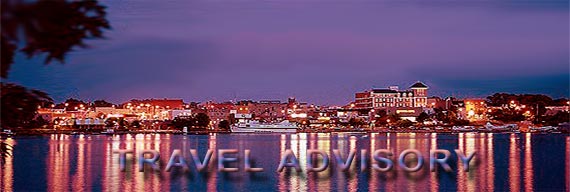| |
About Australia
|
 |
Australia
is the flattest continent, with
the oldest and least fertile soils, and is the driest inhabited
continent. Only the south-east and south-west corners of the continent
have a temperate climate. The population density, 2.8 inhabitants per
square kilometre, is among the lowest in the world, although a great
proportion of the population lives along the temperate south-eastern
coastline.
Australia
has a total 34,218 kilometres (21,262 mi) of coastline
(excluding all offshore islands). The
Great Barrier Reef, the world's largest coral reef, lies a short
distance off the north-east
coast and extends for over 2,000 kilometres (1,250 mi).
The
neighbouring countries are Indonesia, East Timor and Papua New Guinea
to the north, the Solomon Islands, Vanuatu and New Caledonia to the
north-east, and New Zealand to the south-east.
|
 |
 THE COMMONWEALTH OF AUSTRALIA THE COMMONWEALTH OF AUSTRALIA |
The
Commonwealth of Australia, the sixth largest country by total area, is
a country in the Southern Hemisphere comprising the mainland of the
Australian continent (the world's smallest continent with landmass of
7,617,930 square kilometres or 2,941,300 sq mi), the island of
Tasmania, and numerous smaller islands in the Indian and Pacific
Oceans. Surrounded by the Indian and Pacific oceans, Australia is
separated from Asia by the Arafura and Timor seas. Neighbouring
countries include Indonesia, East Timor, and Papua New Guinea to the
north, the Solomon Islands, Vanuatu, and New Caledonia to the
north-east, and New Zealand to the southeast.
Australia has 34,218 kilometres (21,262 mi) of coastline (excluding all
offshore islands) and claims an extensive Exclusive Economic Zone of
8,148,250 square kilometres (3,146,060 sq mi). This exclusive economic
zone does not include the Australian Antarctic Territory.
Australia
consists of six states, two major mainland territories, and other minor
territories. The states are New
South Wales, Queensland, South Australia, Tasmania, Victoria and
Western Australia. The two major mainland territories are the Northern
Territory and the Australian Capital Territory (ACT).
Since Federation, Australia has maintained a stable liberal democratic
political system and remains a Commonwealth realm. The population is 22
million, with approximately 60% concentrated in and around the mainland
state capitals of Sydney, Melbourne, Brisbane, Perth and Adelaide. The
nation's capital city is Canberra, located in the Australian Capital
Territory.
Today, Australia is a developed country, with a prosperous
multicultural society and excellent results in many international
comparisons of national performance such as human development, quality
of life, health care, life expectancy, public education, economic
freedom and the protection of civil liberties and political rights.
Australian cities routinely rank among the world's highest in terms of
cultural offerings and quality of life.
Australia is a member of the United Nations, G20, Commonwealth of
Nations, Organisation for Economic Cooperation and Development, ANZUS,
Asia-Pacific Economic Cooperation, South Pacific Forum and the World
Trade Organization.
BROWSE RELATED INFORMATION:
 Travel
Australia Travel
Australia
 Australia
- History Australia
- History
 Up Close & Personal With Australian
Wildlife Up Close & Personal With Australian
Wildlife
 Australian
Parks & Wildlife Australian
Parks & Wildlife
 Mount Buffalo National Park Mount Buffalo National Park
 Australia:
Spectacular Great Ocean Road Australia:
Spectacular Great Ocean Road
 Great Ocean Road: The Twelve Apostles Great Ocean Road: The Twelve Apostles
 The Great Australian Roadtrip The Great Australian Roadtrip
 Following
the Wine Trail Following
the Wine Trail
 Australian Wineries Australian Wineries
 Australian
Government Information Australian
Government Information
 Australia, New Zealand, Pacific Islands
& More... Australia, New Zealand, Pacific Islands
& More...
|
 |
|
|
|
|













